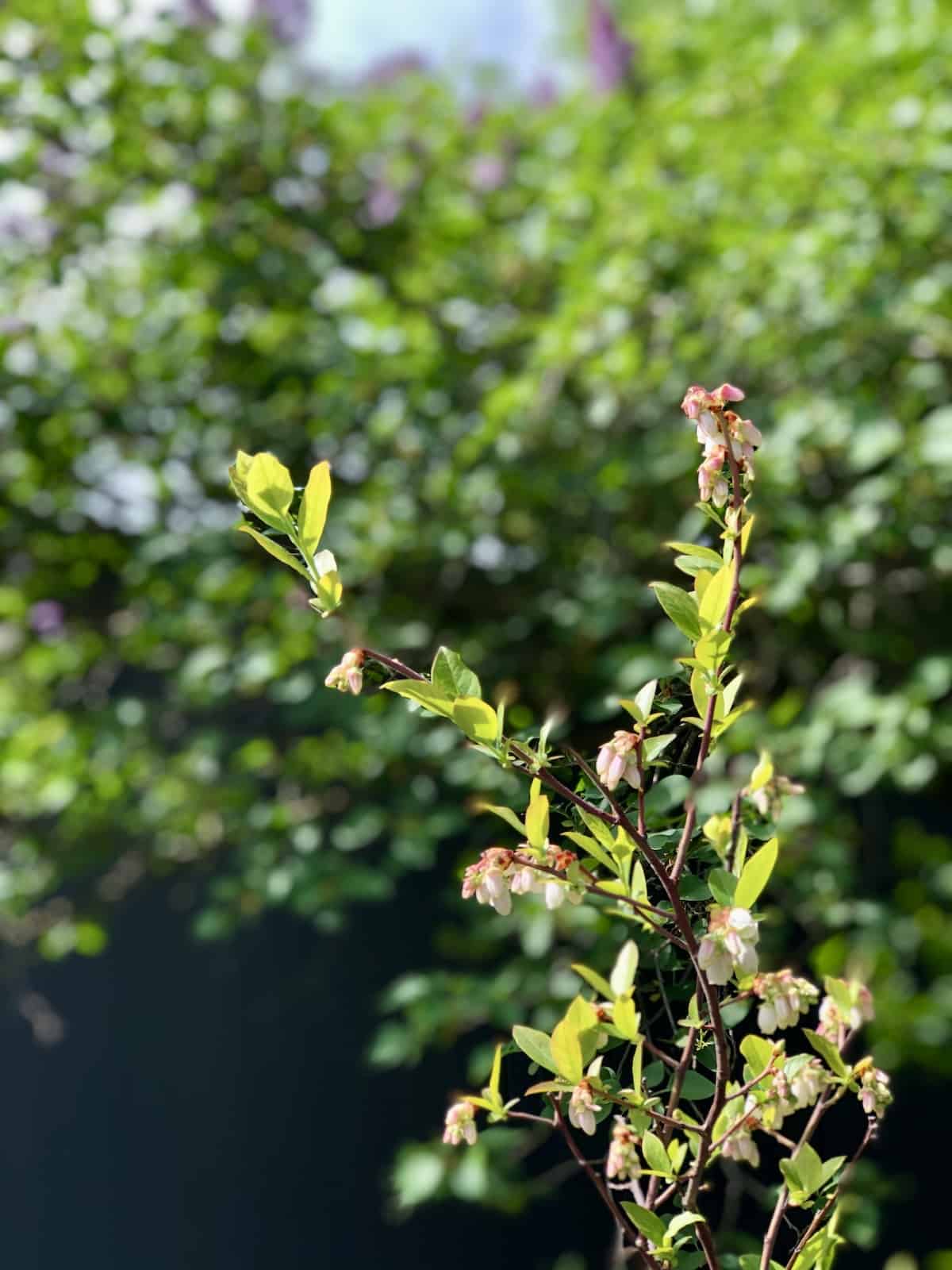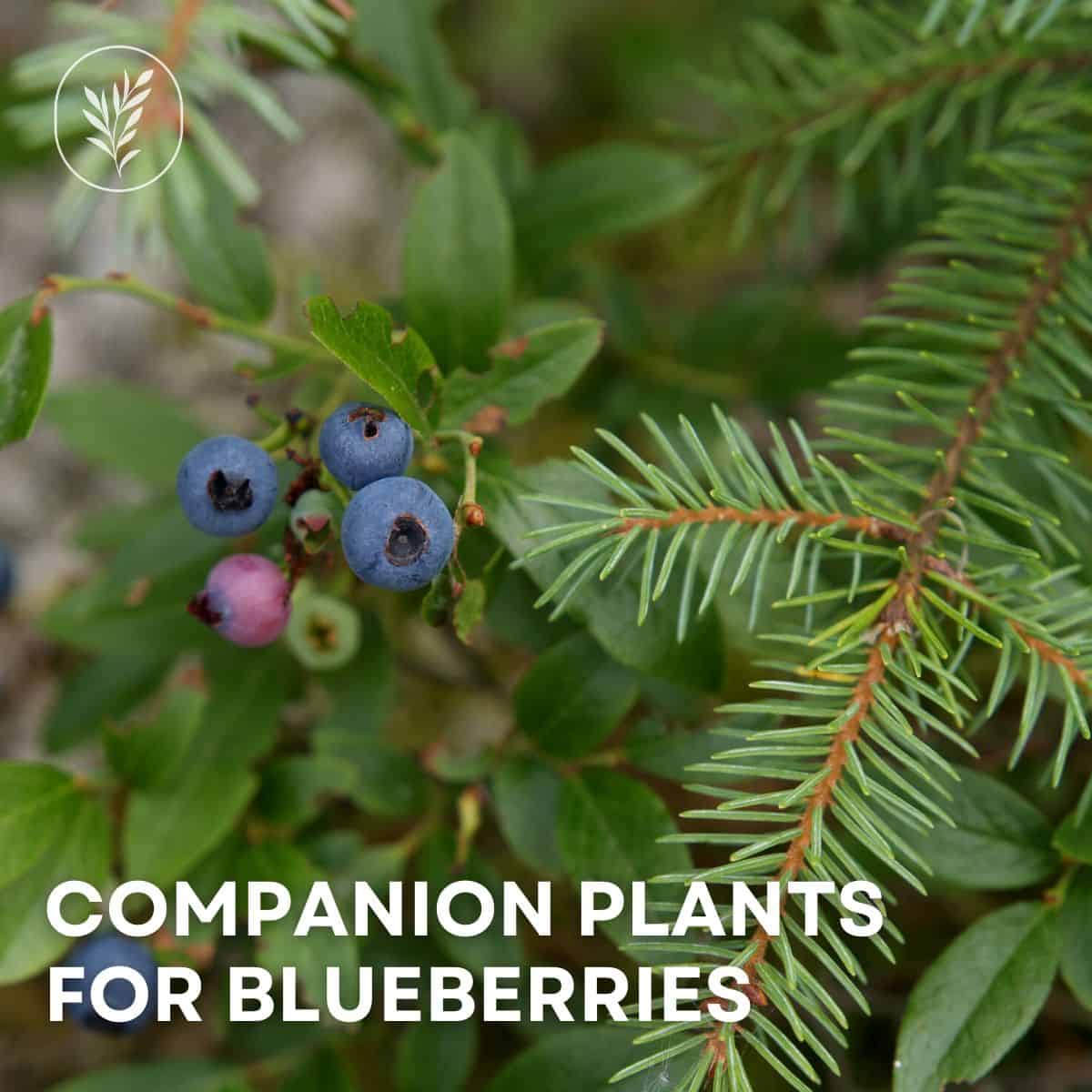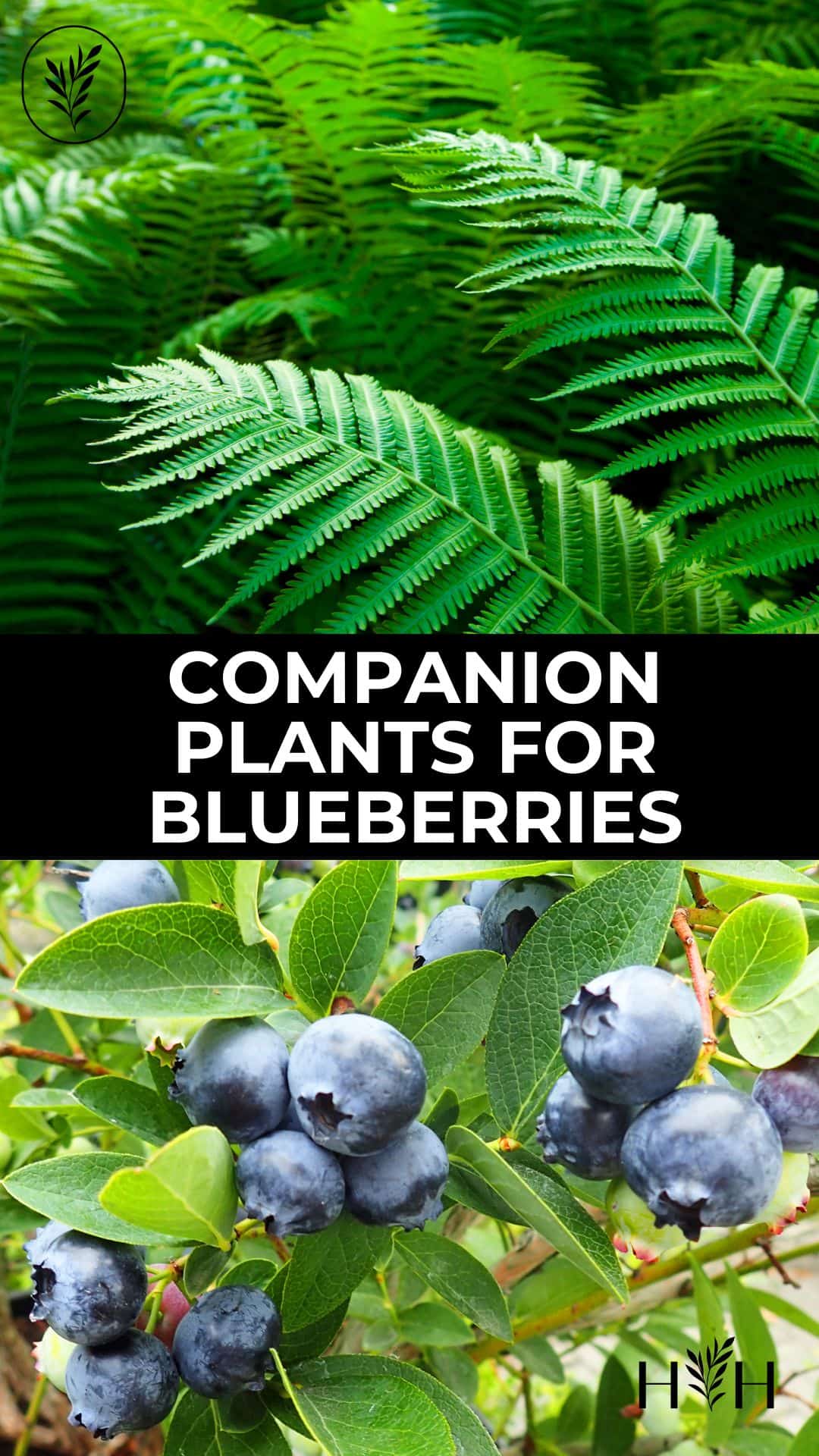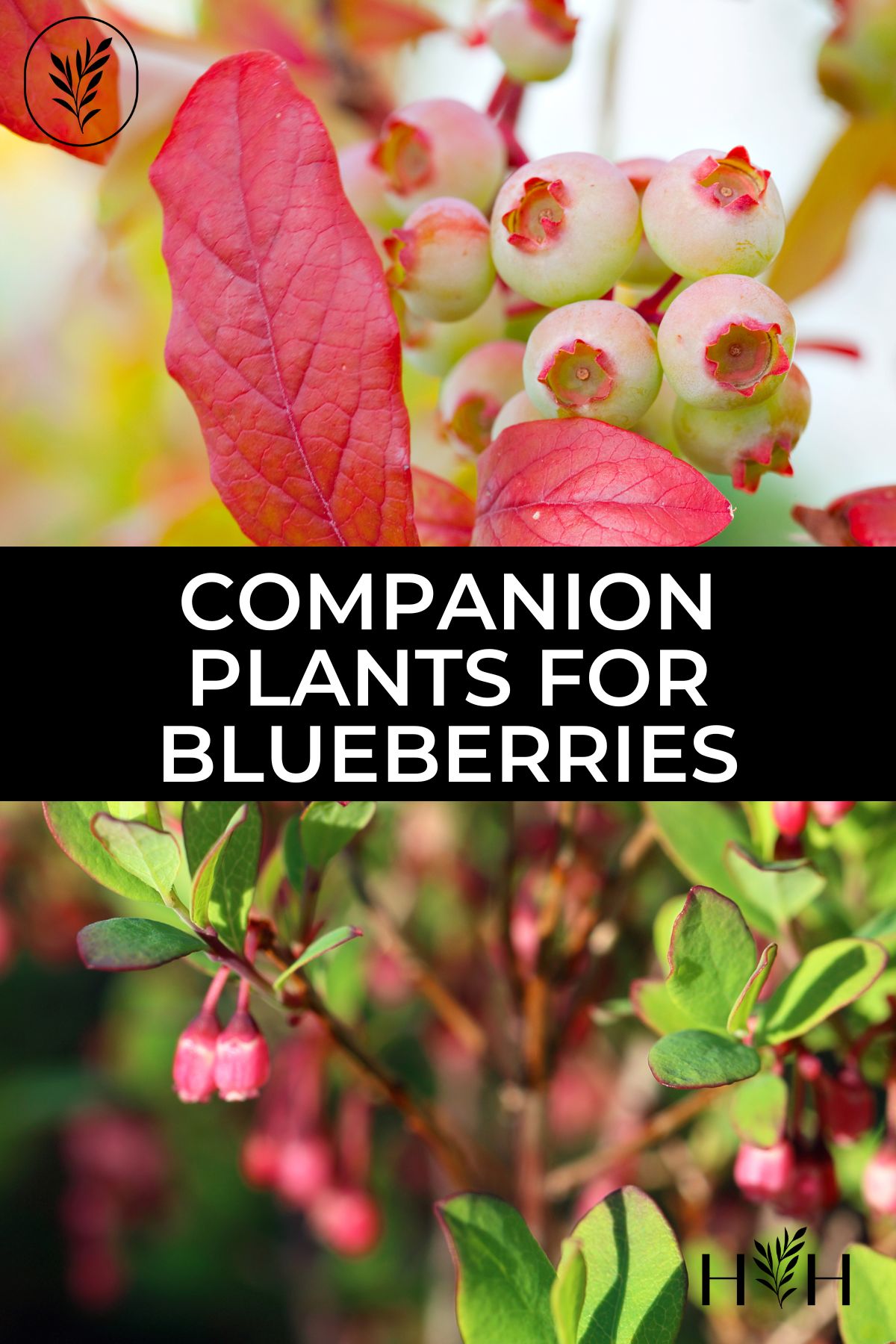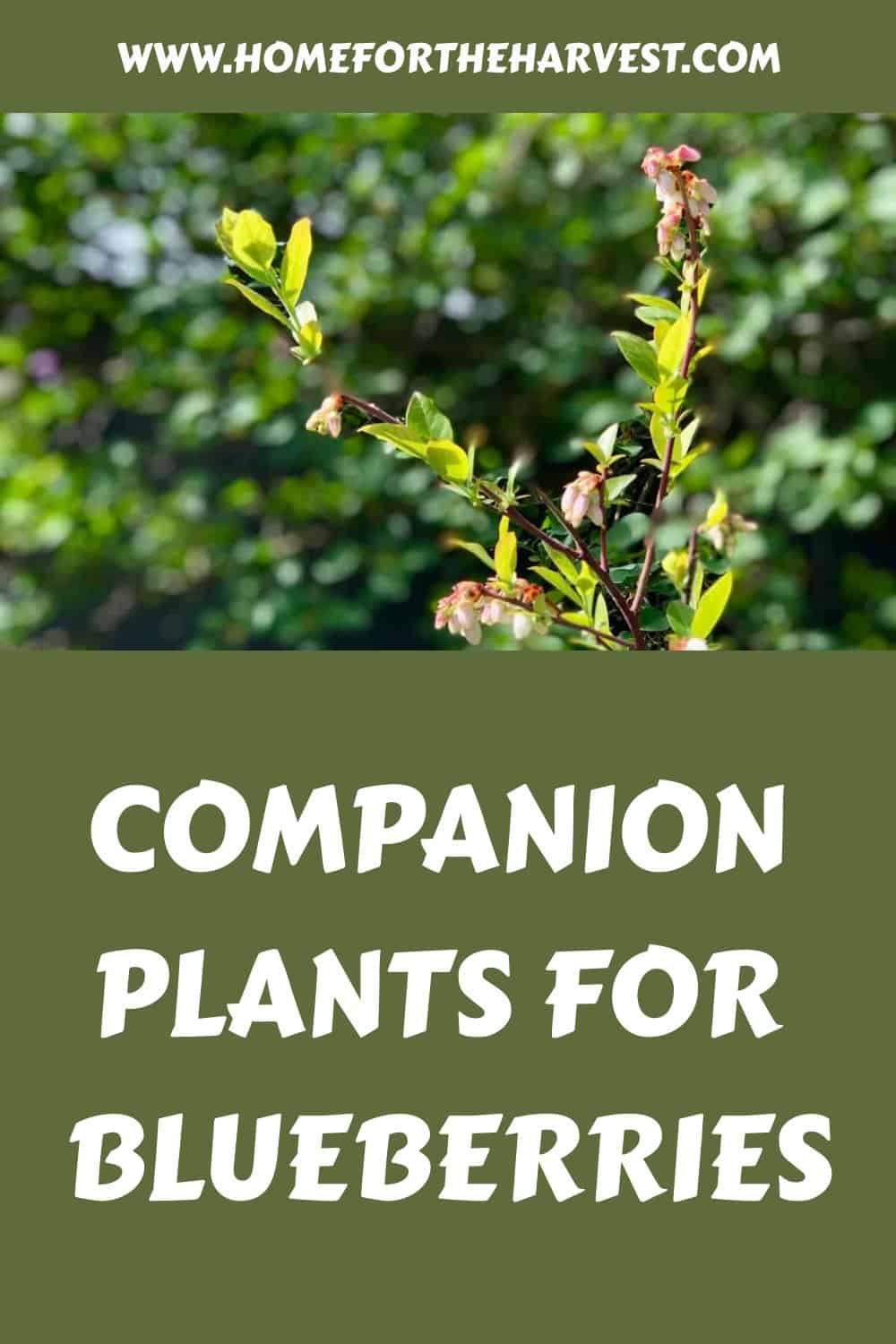Blueberry bushes provide delicious fruit and add a lovely whimsical element to the garden. While blueberries can be a bit particular about their soil conditions, there are certainly some wonderful plant pairings for blueberry companion planting.
The best companion plants for blueberries have the following characteristics:
- Thrive in acidic soil (just like blueberry bushes)
- Attract pollinators during the spring blueberry blossom season
- Grow in the same climate zone and relative environmental conditions
- Aesthetically beautiful when paired with blueberries
There are a number of wonderful companion plants for blueberry bushes in the woodland garden. Read on to discover 13+ of the best companion plants for blueberries.
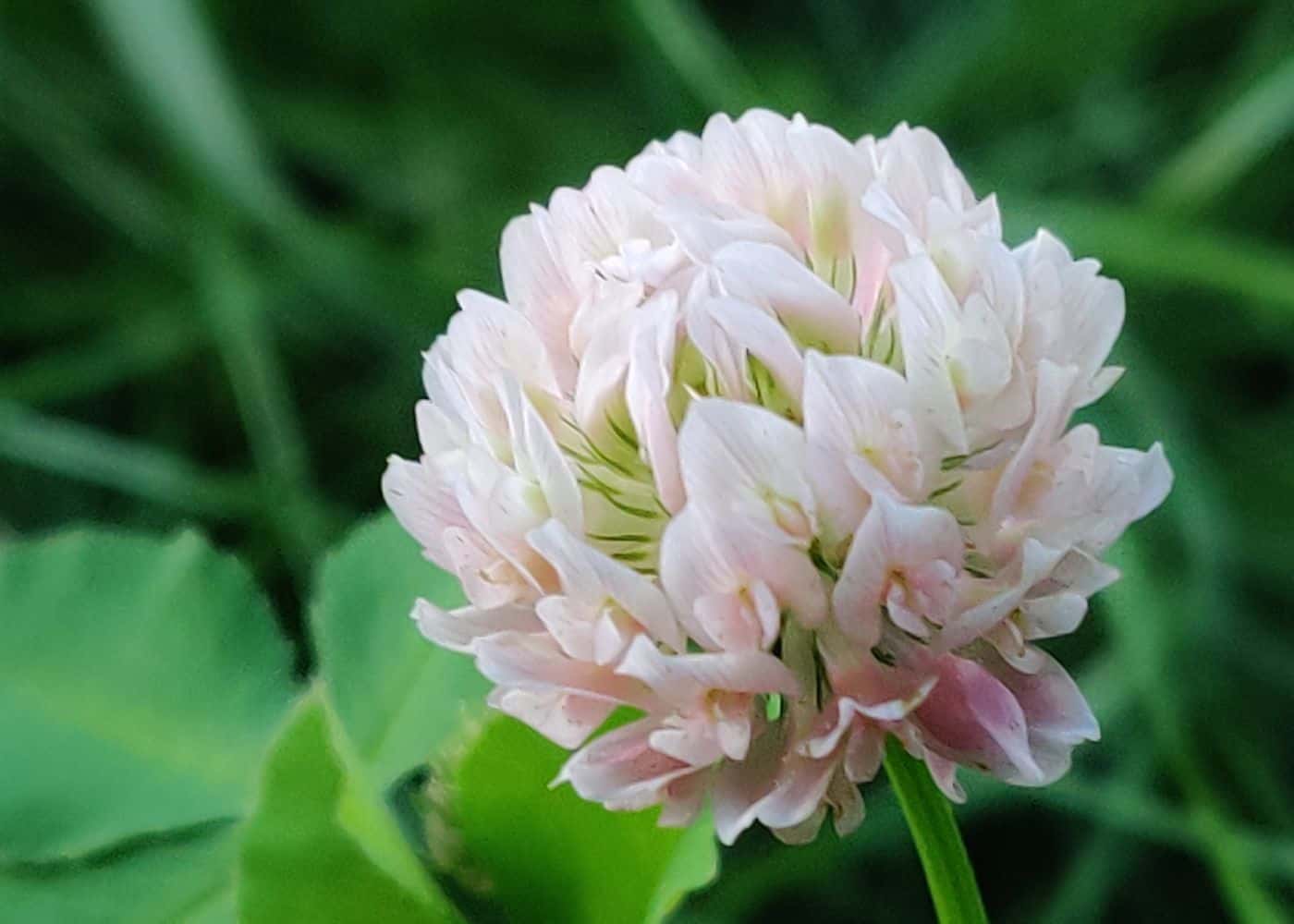
1. Clover
Nitrogen-fixing plants like white Dutch clover or quick-growing crimson clover can improve soil fertility by adding nitrogen, which benefits blueberry plants. Nitrogen is the most commonly deficient mineral in a surprising number of gardens, so natural ways to boost levels in the soil are always welcome. The clover also acts as a living mulch, suppressing weeds and conserving soil moisture.
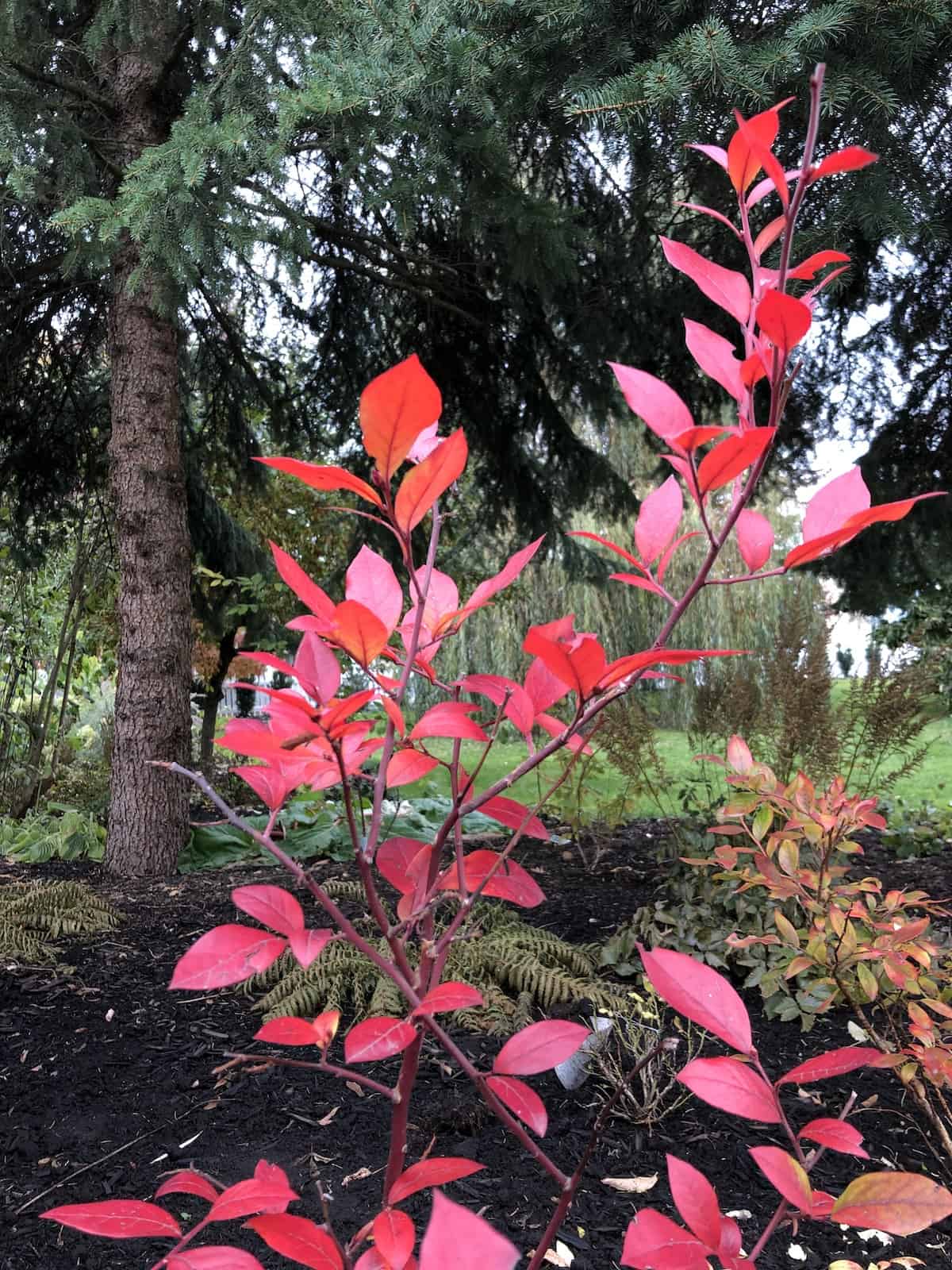
2. Evergreens
Almost all types of evergreen trees and shrubs, like spruce, pine, yew, fir, and juniper, act as excellent companion plants for blueberries. These trees tend to grow well in acidic soil, like blueberries.
If you have a small space, choose a small evergreen shrub so the plant doesn’t ever grow too large. On the other hand, if you’re looking for quick growth, here are the fastest-growing evergreen trees that can be planted for shade and privacy in just a few years. They can provide shade to the berry plant from the strong afternoon sun in hotter climates.
In my blueberry patch, I’ve planted three of these dwarf blue spruce trees. Other nice options include this classic Emerald Green arborvitae and the popular Blue Point juniper.
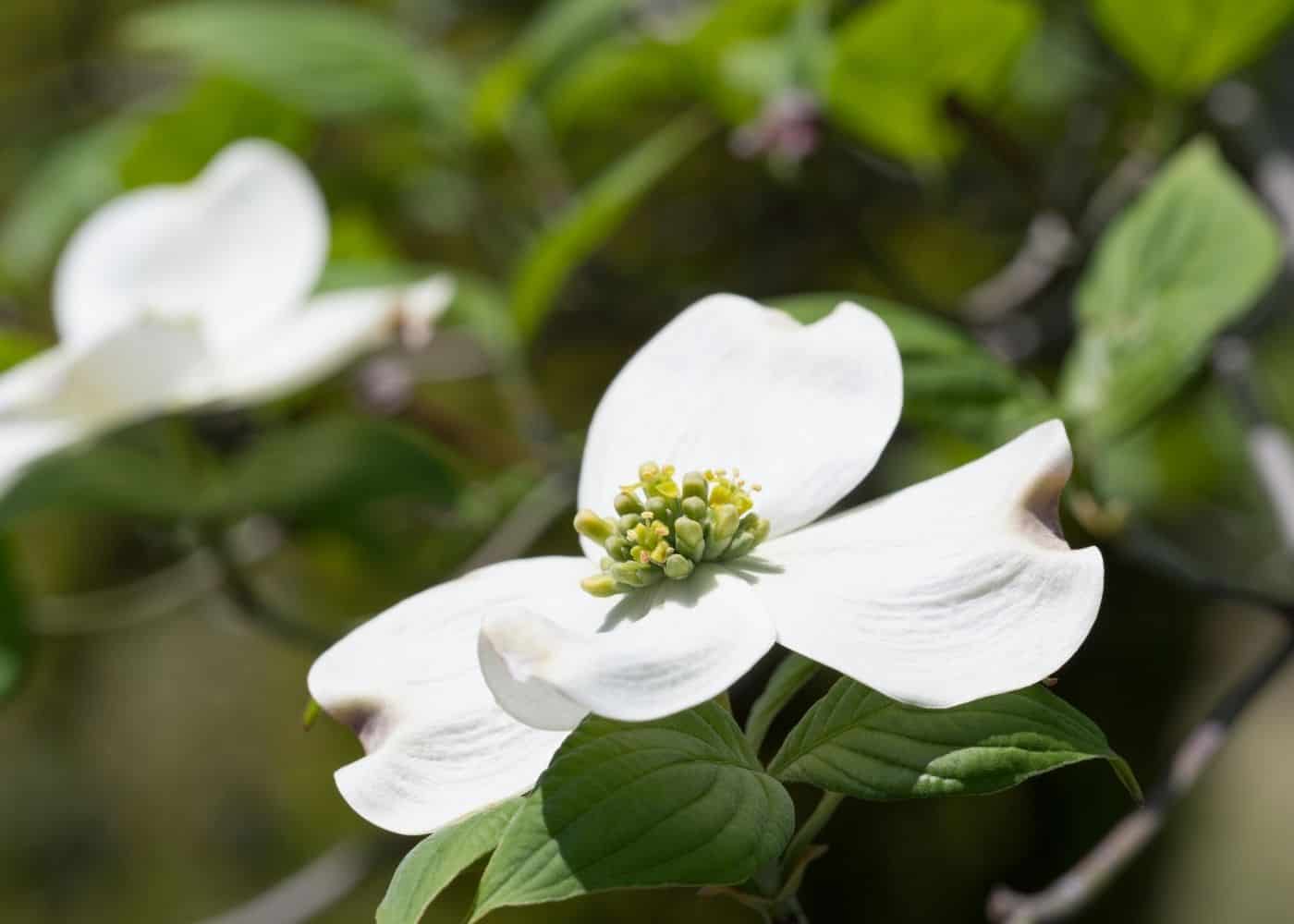
3. Dogwood trees & shrubs
Dogwood is an excellent tree to pair with blueberry bushes. They enjoy similar soil and sun conditions and come in many different varieties. Dogwoods can grow from 10 feet to 30 feet tall and are even available as shrubs. In any size, their beautiful flowers each year make them more than worth planting!
Flowering dogwoods have either pink or white flowers. Here’s the classic pink flowering dogwood, although you can get stronger-colored blooms with a Japanese dogwood like this one. For white flowers, ‘Cherokee Princess’ is a lovely choice, as is the white Kousa dogwood.
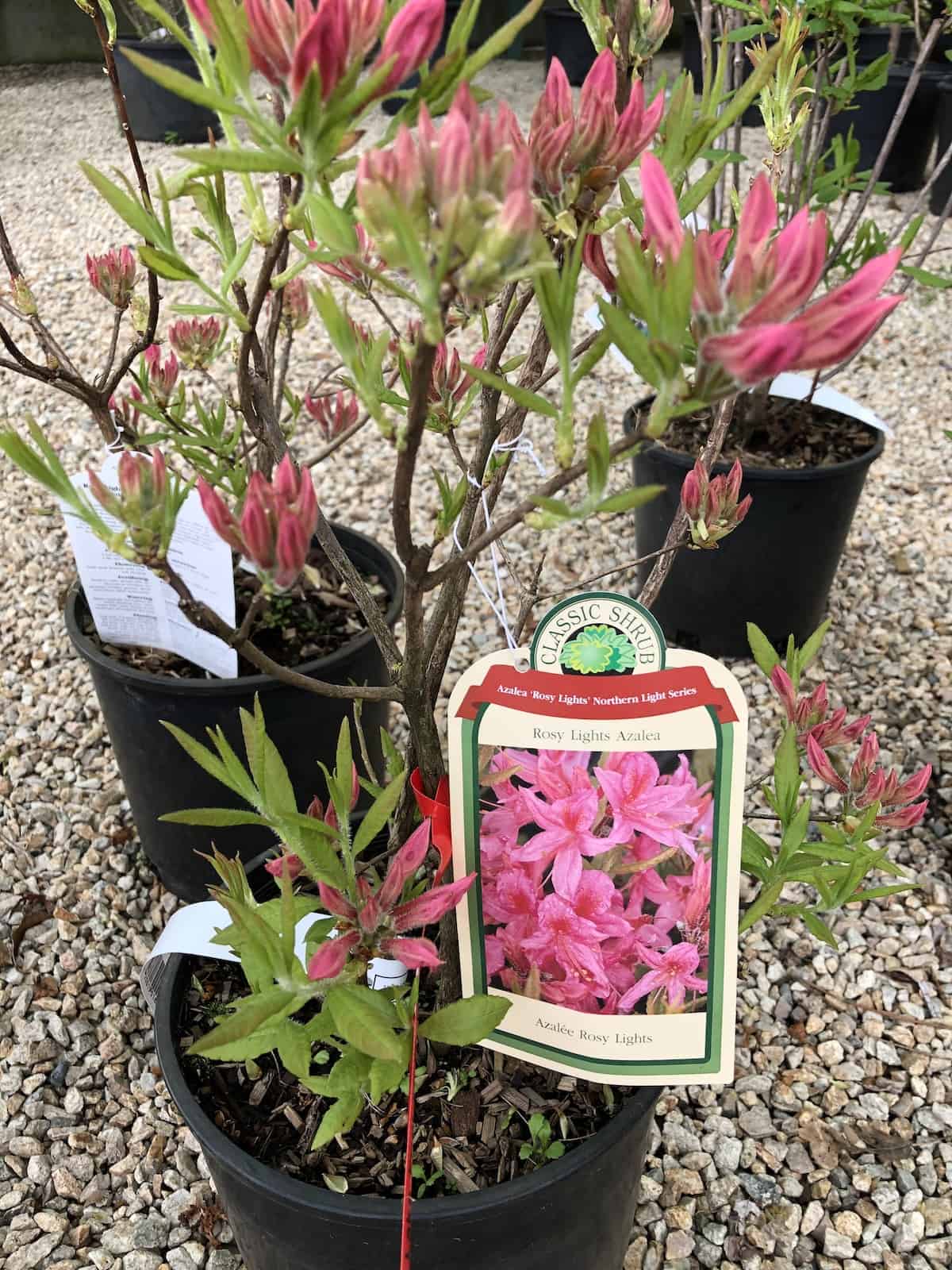
4. Rhododendron & azalea
Rhododendron and azalea thrive in acidic soil and are often planted under evergreen trees like pines. However, unlike blueberries, these plants require a bit of shade to grow well.
Rhododendrons can be positioned in shadier spots of the blueberry garden to provide a lovely evergreen backdrop to the shrubs while providing optimal sunlight conditions. And best of all, the flowers of these acid-loving plants tend to bloom at the same time as blueberries, making the garden attractive for both humans and pollinators.
For evergreen leaves, the Lavender rhododendron is lovely. For a deciduous option, both Bollywood azalea and Bloom-A-Thon Lavender azalea are wonderful.
For extra details, check out the video I made to accompany this article:
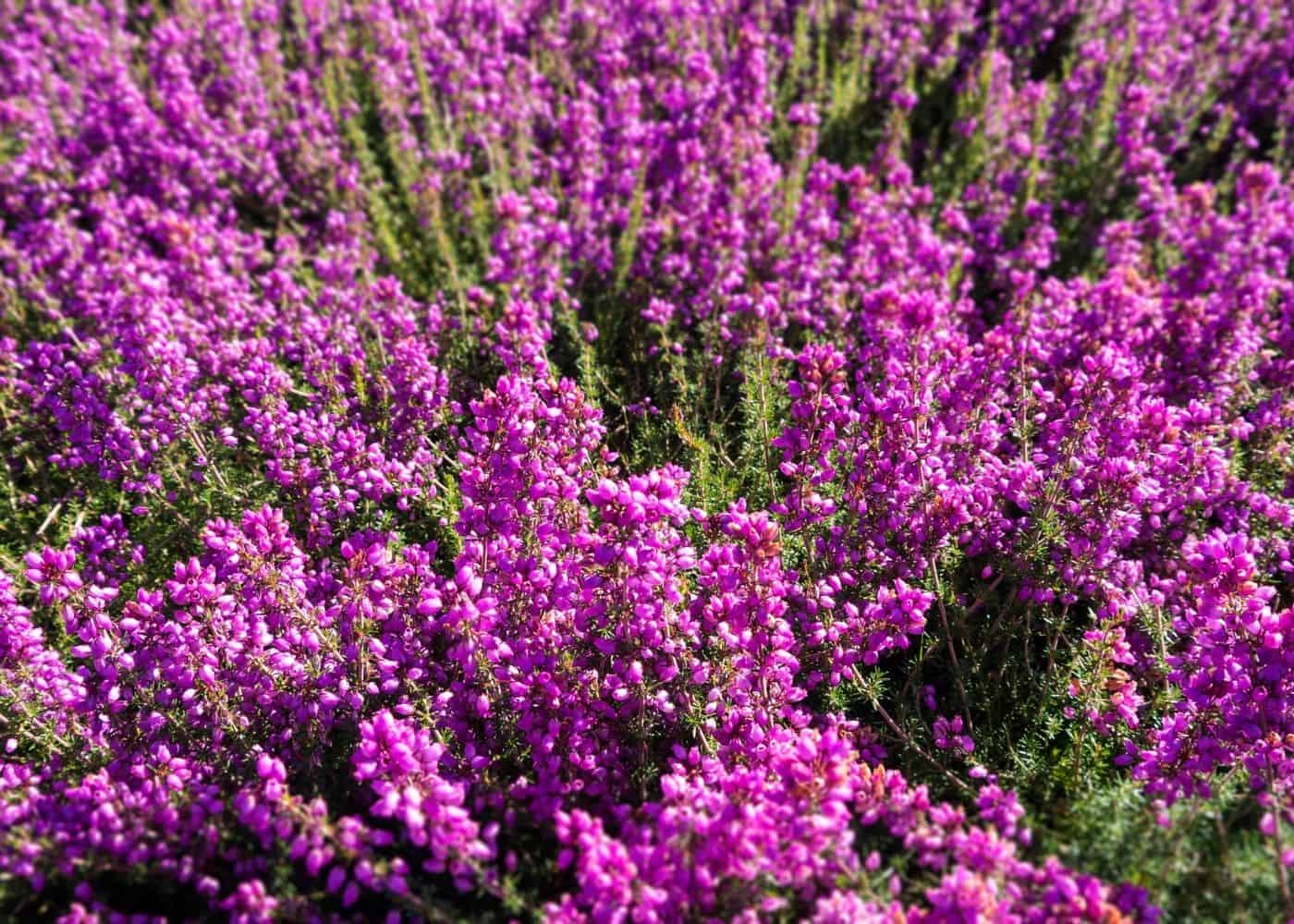
5. Heather
Heather is another early bloomer that is a good match with blueberries in terms of attracting beneficial insects and pollinators to the garden. Heather is a low-growing shrubby ground cover with delicate white or purple flowers. These plants are long-lived, tolerate acidic soil, and are always a pleasure to look at.
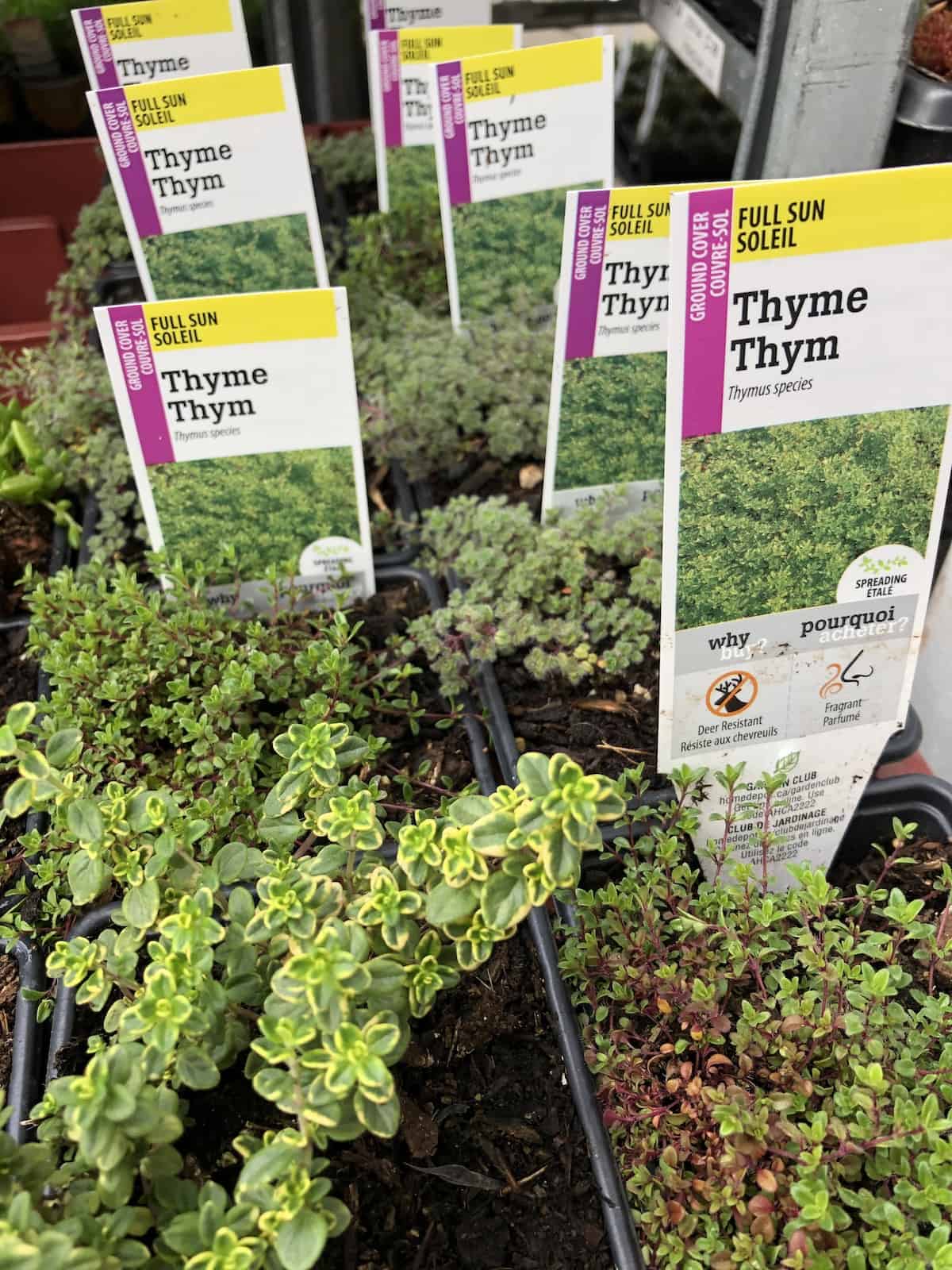
6. Thyme
Thyme is a low-growing groundcover-type plant to match blueberries. This herb looks beautiful around the blueberry plants and can be a bit of a deterrent to pests due to its nice scent. It also tends to act as a living mulch and help retain soil moisture and deter weed growth around blueberry shrubs. Lastly, thyme is a low-maintenance perennial plant, meaning it grows back from its roots every year (and less work each spring for you!).
There are tons of different varieties of thyme to choose from, so there’s just got to be one that suits your taste! Red creeping thyme is particularly nice, with its burgundy-tinted foliage. Other nice options include Orangelo thyme, German thyme, and Lemon thyme.
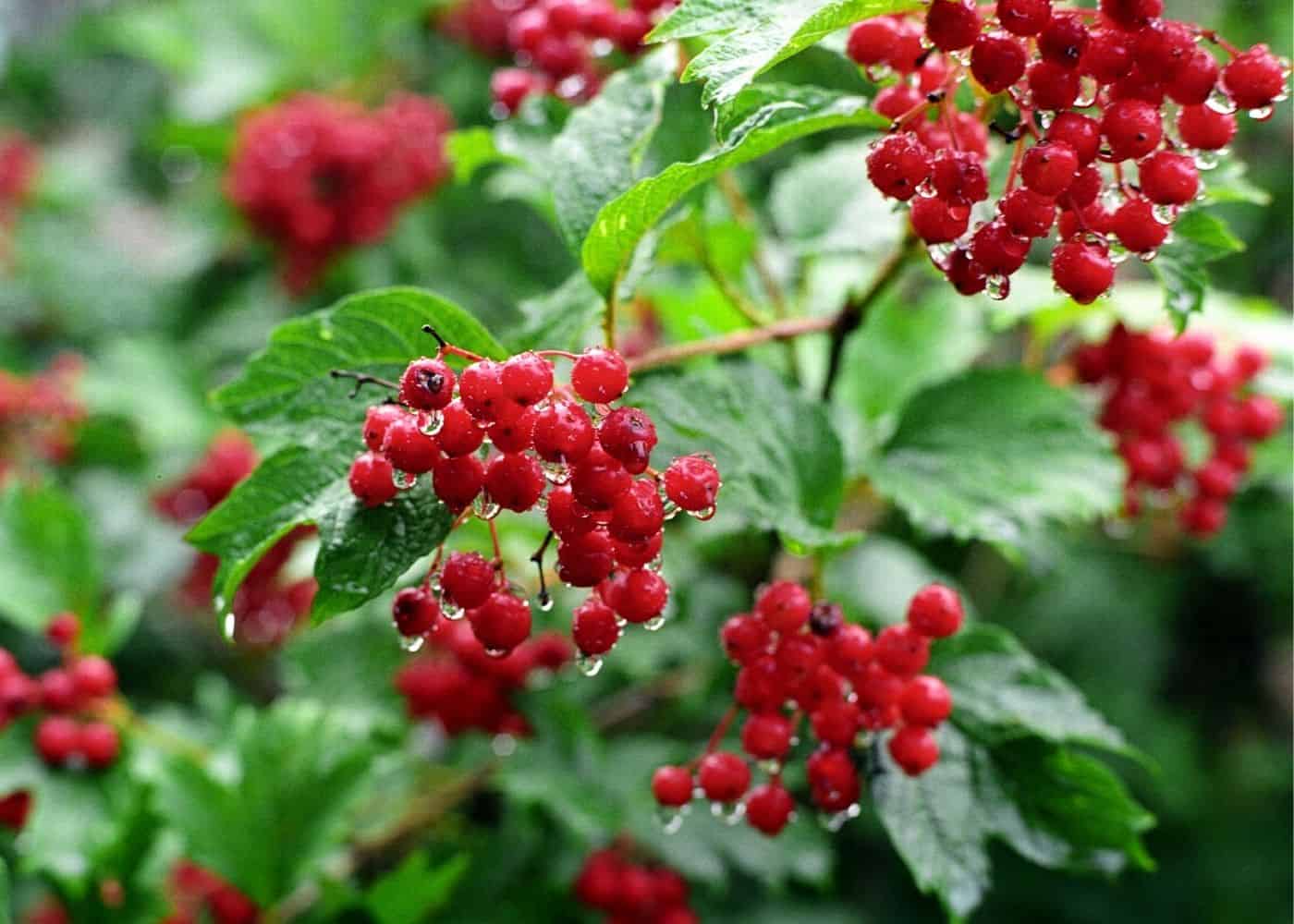
7. Cranberry bushes
Blueberries and cranberries have similar requirements and make a good companion planting pair. They both love moist, well-draining, slightly acidic soil. Group them together to create a berry garden and then infill with other plants like ornamentals and groundcovers or annual cover crops that tolerate a similar soil ph.
There are quite a few cranberry varieties to consider adding as companion plants for blueberries. For a culinary variety, choose the Stevens cranberry (or something similar). The Wentworth cranberry is best for winter floral arrangements, while birds love the related Audubon® American highbush cranberrybush viburnum (not a true cranberry).
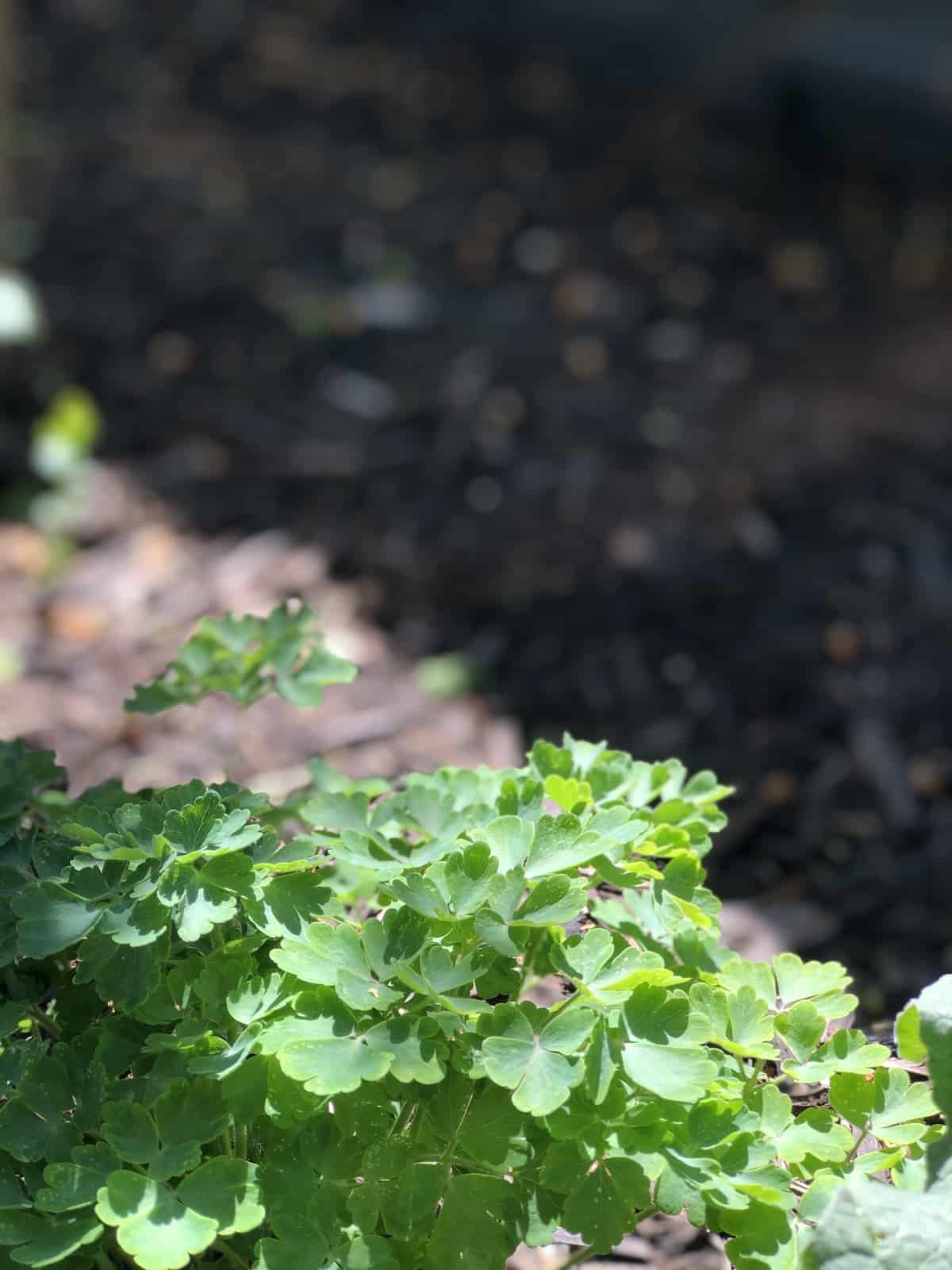
8. Columbine
Columbine is an excellent perennial flower to grow around blueberries. These perennial flowers come in white, pink, purple, blue, and red. Their foliage can grow about 15 to 20 inches tall in good soil conditions. They are extremely low-maintenance plants that beautify your garden by providing a bright green foliage underlay for your blueberries.
Another reason that columbine is such a great companion plant for blueberries is that it blossoms around the same time as the blueberries. The large columbine flowers attract beneficial pollinators and increase the pollination of the blueberries in the garden area.
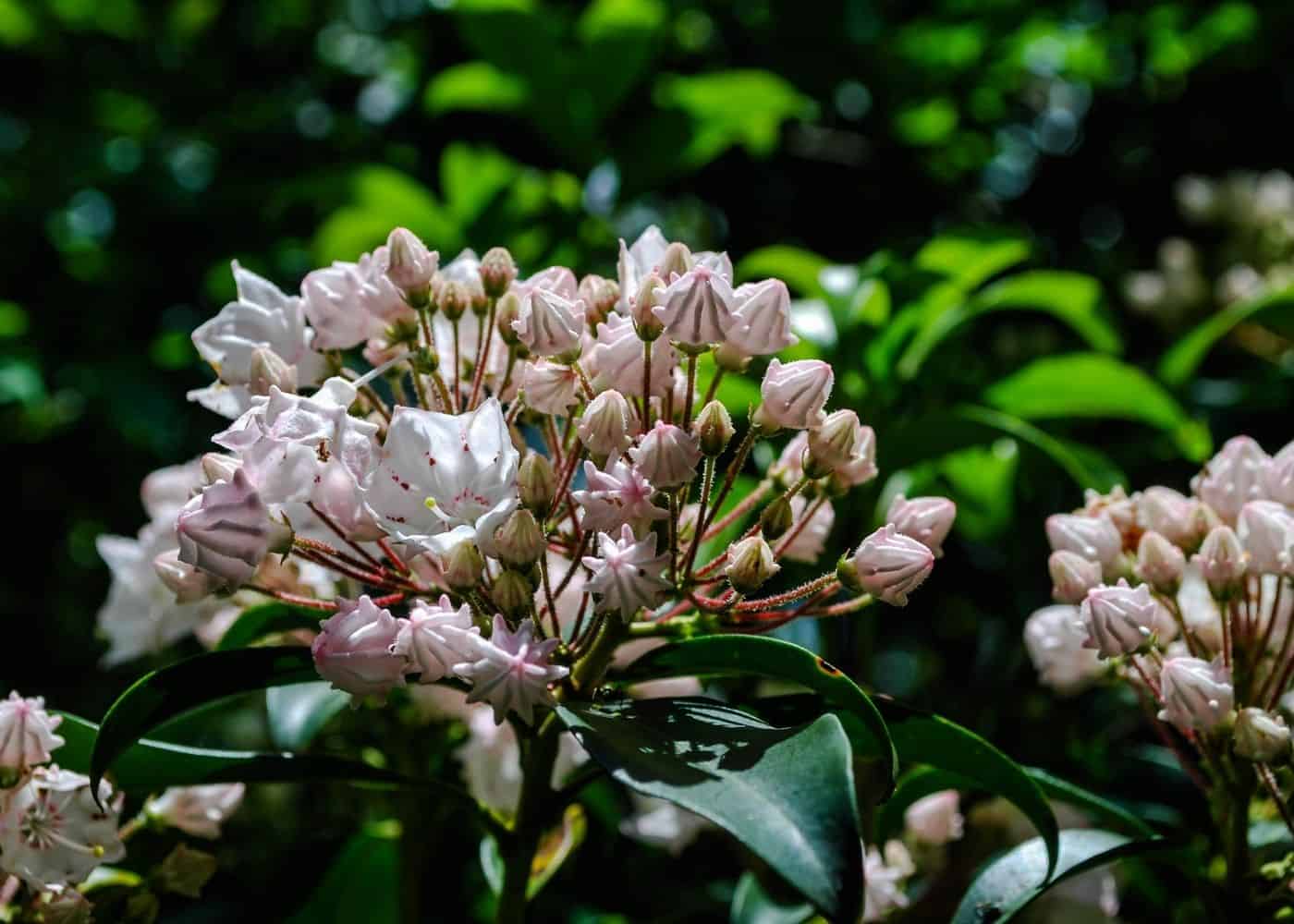
9. Mountain Laurel
Mountain Laurel is a classic blueberry companion plant. The gorgeous leaves of this shrub tend to complement the small leaves of lanky blueberry bushes. These low-maintenance shrubs certainly deserve consideration for planting alongside or behind your blueberries. I like the Olympic Fire mountain laurel for its compact size and reliable light pink flowers.
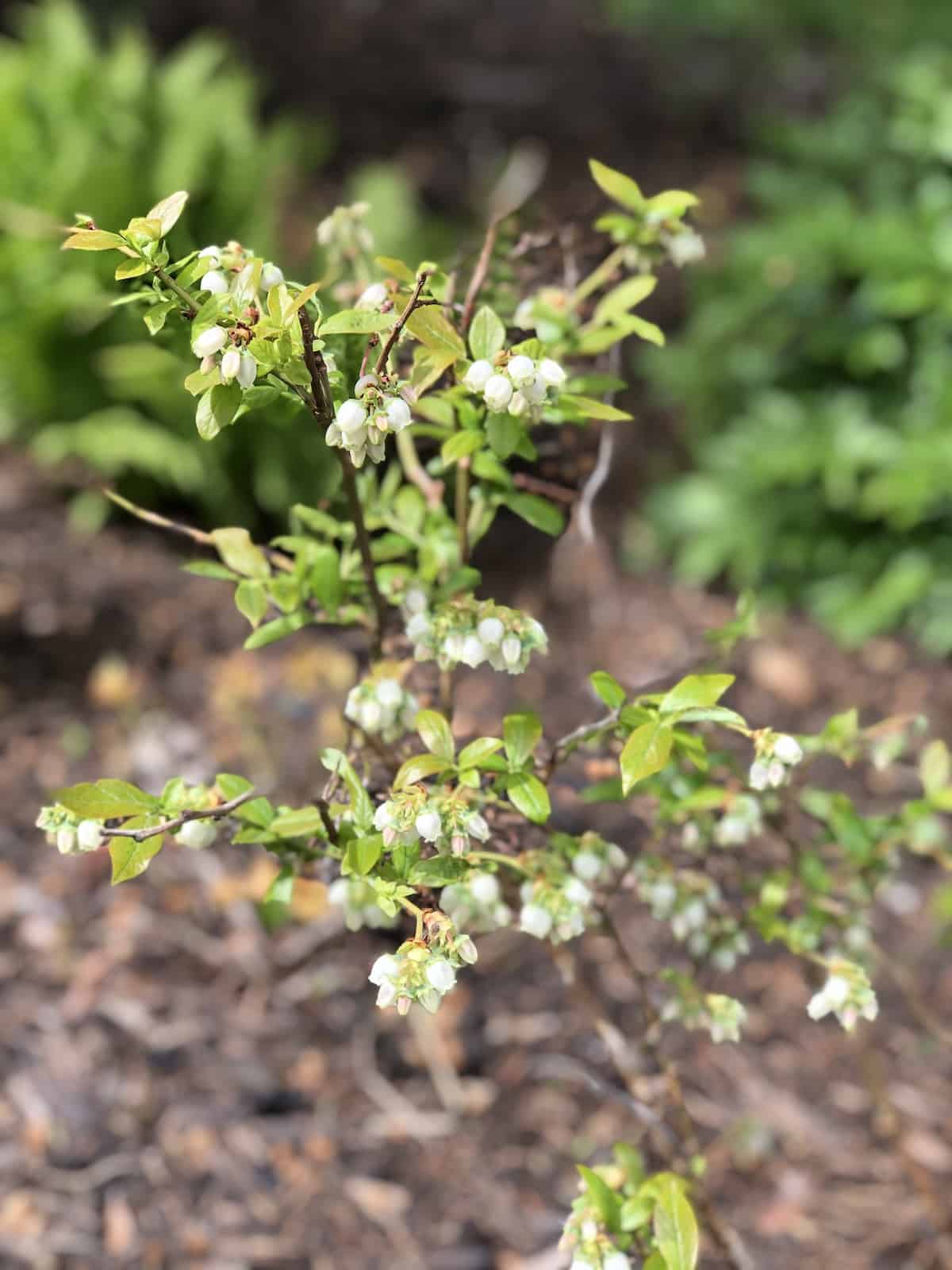
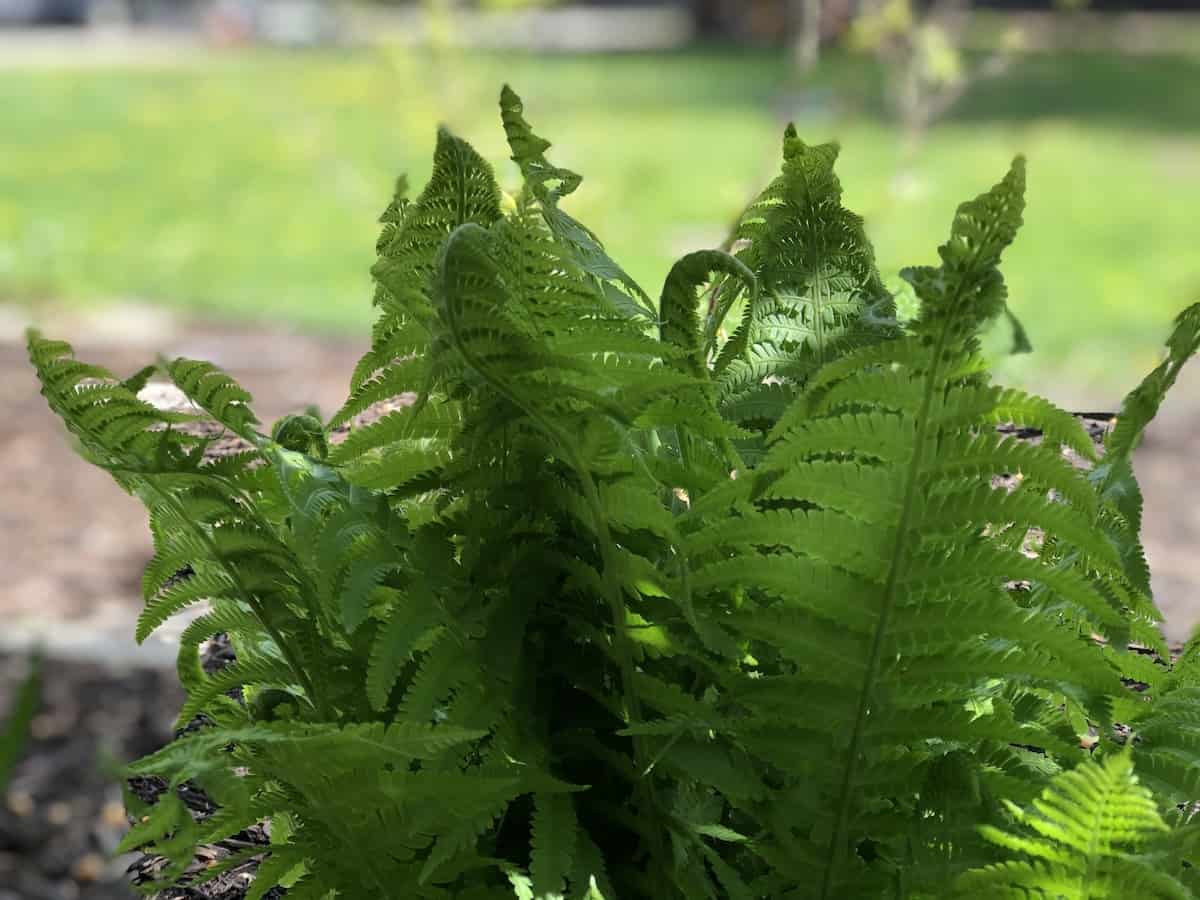
10. Fern
Ferns make a good companion for blueberry bushes. Again, these plants provide a lovely bright green accent to the lanky blueberry shrubs. Ferns love moist soil and will thrive in shady conditions under the canopy of an overhanging evergreen tree. Position the ferns in shady spots and reserve the sunnier spots for the blueberry plants. My favorite garden fern is the Ostrich fern, as it’s very low-maintenance and can spread to cover an area (slowly but surely).

11. Holly
Holly is an evergreen shrub that can be successfully planted alongside blueberries. Like blueberry, holly prefers well-draining, moist, acidic soil and a nice warm sunny spot. Holly also provides visual interest in wintertime once the beautiful autumn leaves of the blueberry bushes have faded. Certain low-growing holly plants also make attractive groundcovers.
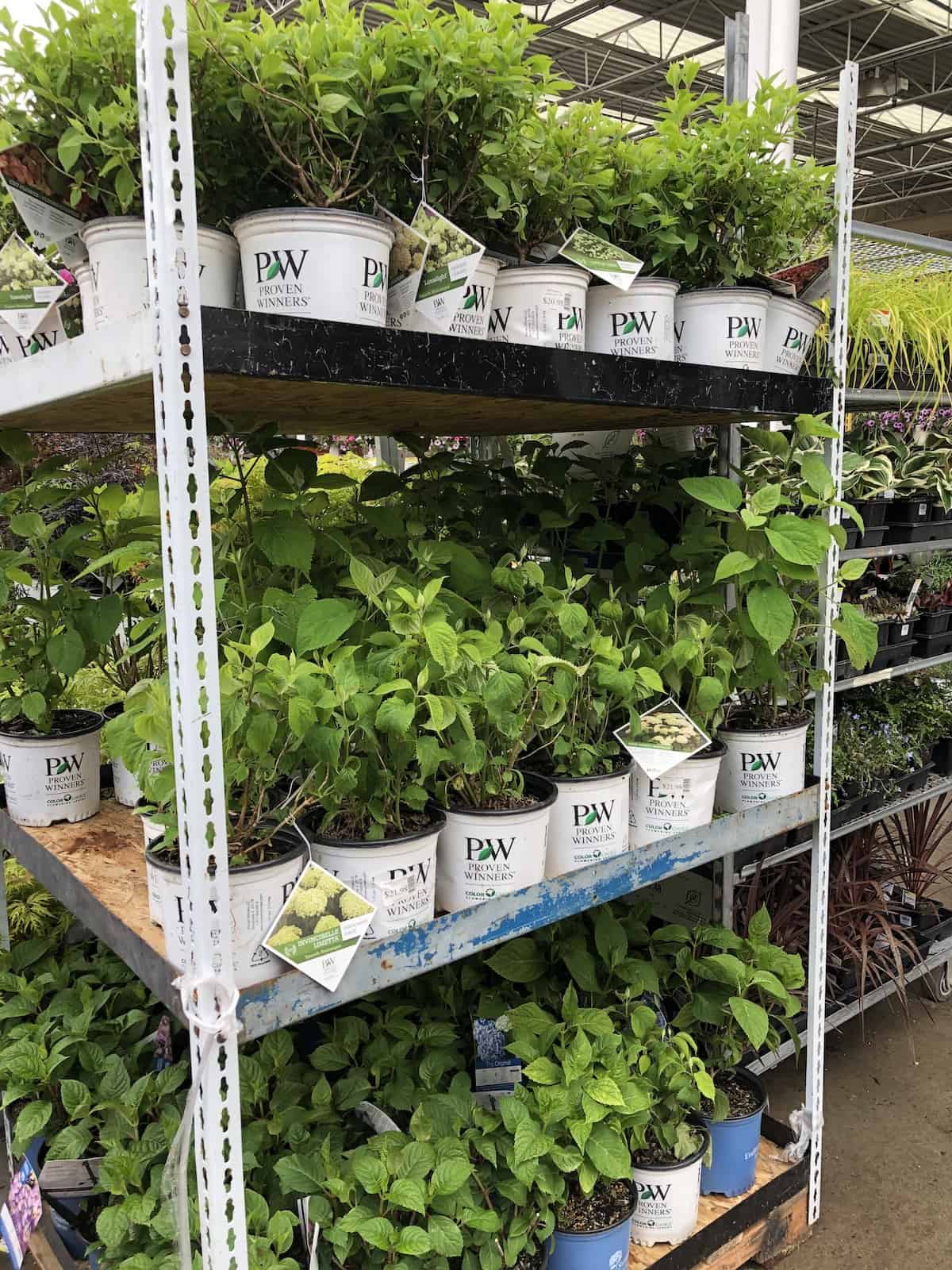
12. Hydrangea
Hydrangea flowering shrubs make a nice companion for blueberry plants because they add both rich green foliage and bright cheery blooms to the garden. They tend to grow taller than most blueberries and start to flower after the blueberry blossoms have faded.
There are six main types of hydrangea plants to choose from and dozens of popular hydrangea varieties. You might just be able to pick some hydrangea blossoms for your kitchen while you’re out picking blueberries!
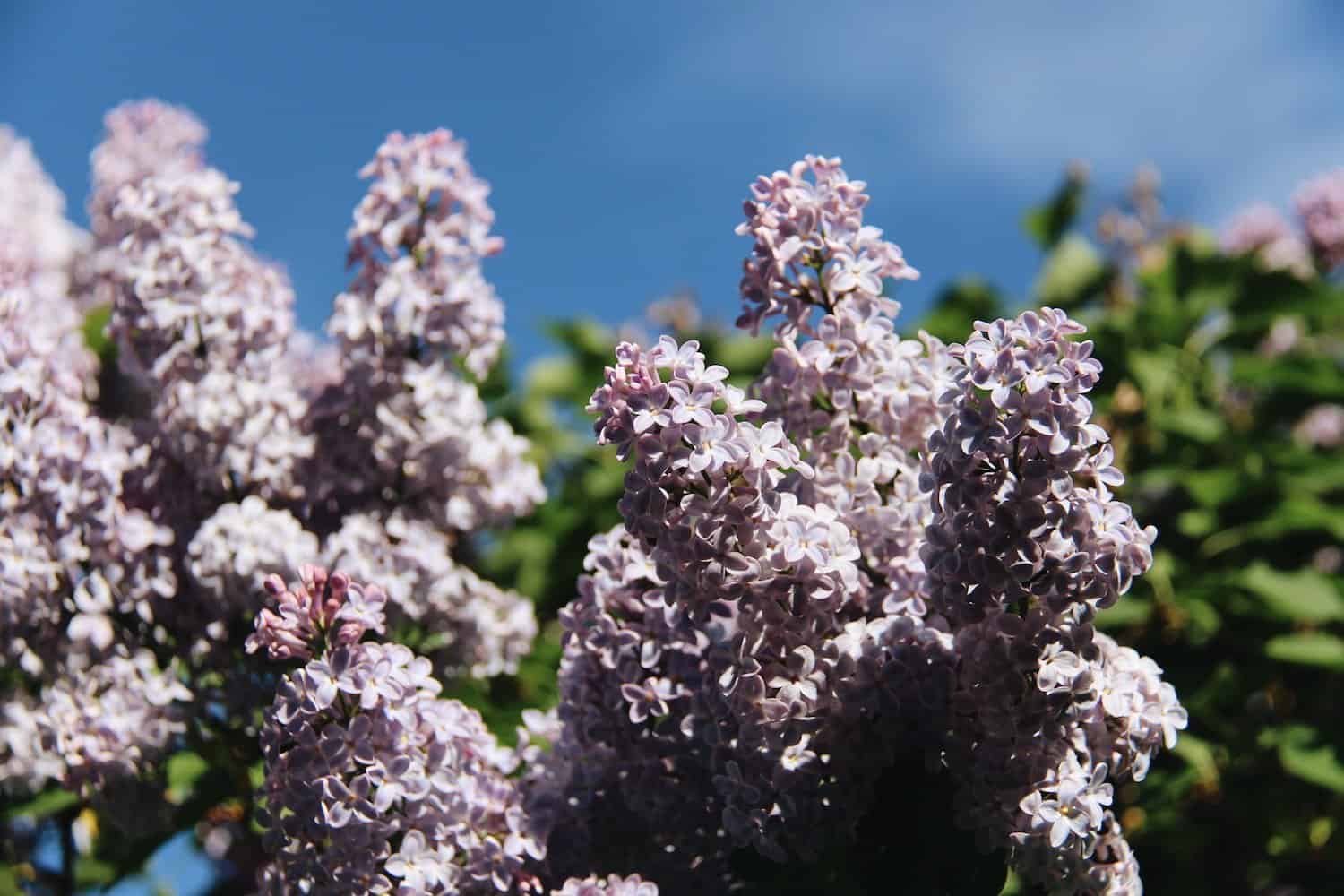
13. Lilac Bush
Lilac is a versatile and easy-to-grow shrub that blooms at the same time as blueberry bushes. These flowering shrubs are among the most dependable bloomers and tend to attract a significant number of beneficial pollinators to the garden. Lilac also makes a lovely cut flower, and you can always use the excuse of “checking on your blueberry blossoms” to go out and snip a few lilac blooms.
Lilacs are available in white, pale purple, pink, and even a rich deep purple. Some top picks include the Charles Joly French lilac (deep purple scented flowers), Bloomerang reblooming lilac (rich purple flowers, blooms twice), and the Scentara Double Blue lilac (highly-scented light purple-blue flowers).
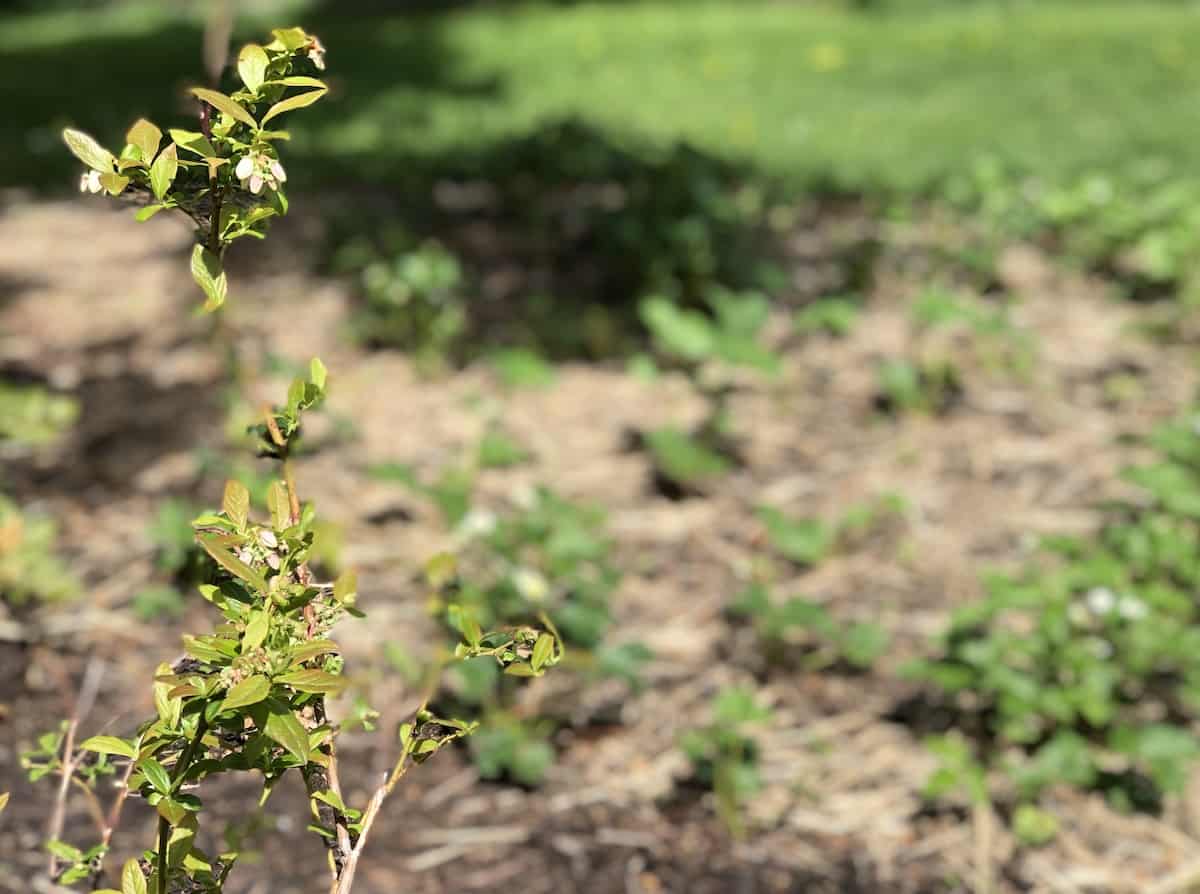
14. Strawberry
Strawberries are perfect to pair with blueberries in the woodland garden. Plant strawberries as a low-growing cover crop in your edible berry garden. Like blueberries, these plants love moist, yet well-drained soil, as well as adequate sunlight.
Use strawberries between the blueberry bushes, along pathways, or along the edge of the berry garden. There are a few different categories of strawberries to consider. In general, choose June-bearing in matted rows if you’d like the biggest, juiciest harvest, while day-neutrals don’t make as many runners and can be easier to manage.
Companion planting tip: Here are some of the best-tasting varieties of strawberry to add to your berry garden
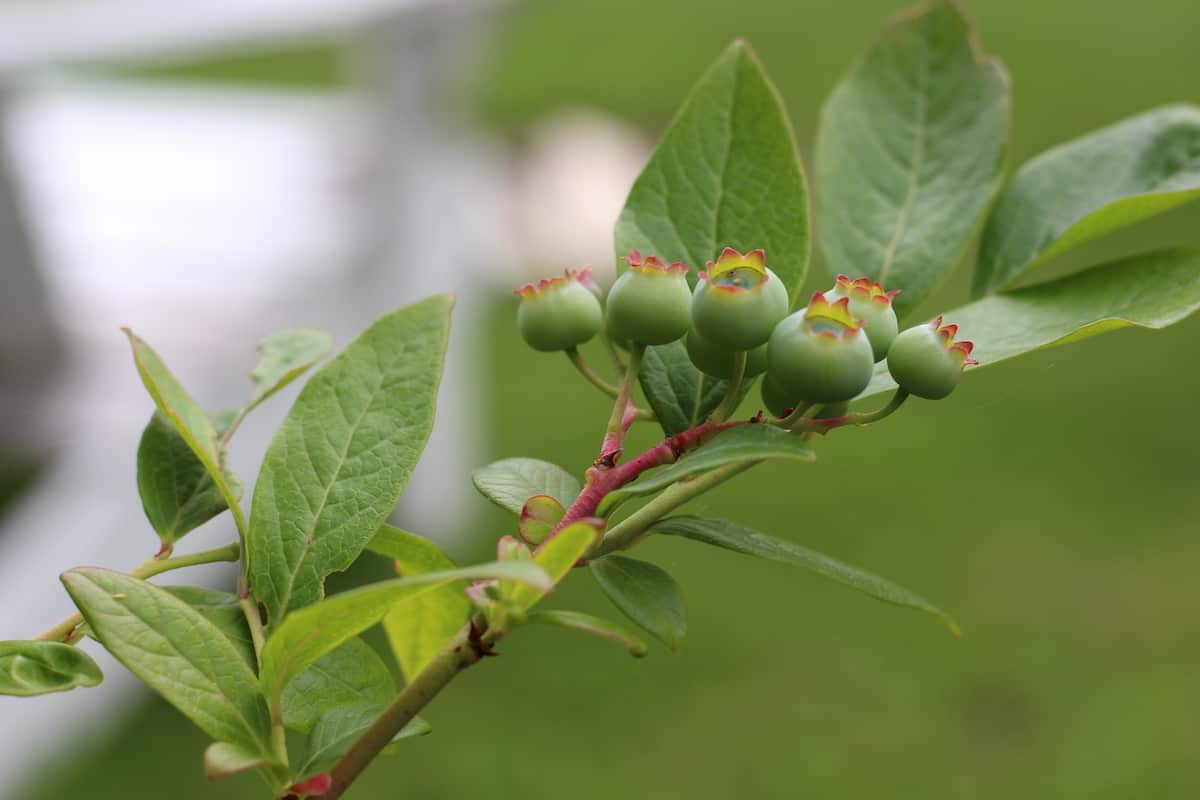
What to avoid planting near blueberries
There are a few types of garden plants to avoid placing near blueberries. This includes nightshades like tomatoes, peppers, and potatoes, as well as brassicas like kale, cabbage, brussels sprouts, and cauliflower. You may also wish to avoid planting melons and salad greens like lettuce near your blueberries. Lastly, avoid planting dill near blueberry bushes.


